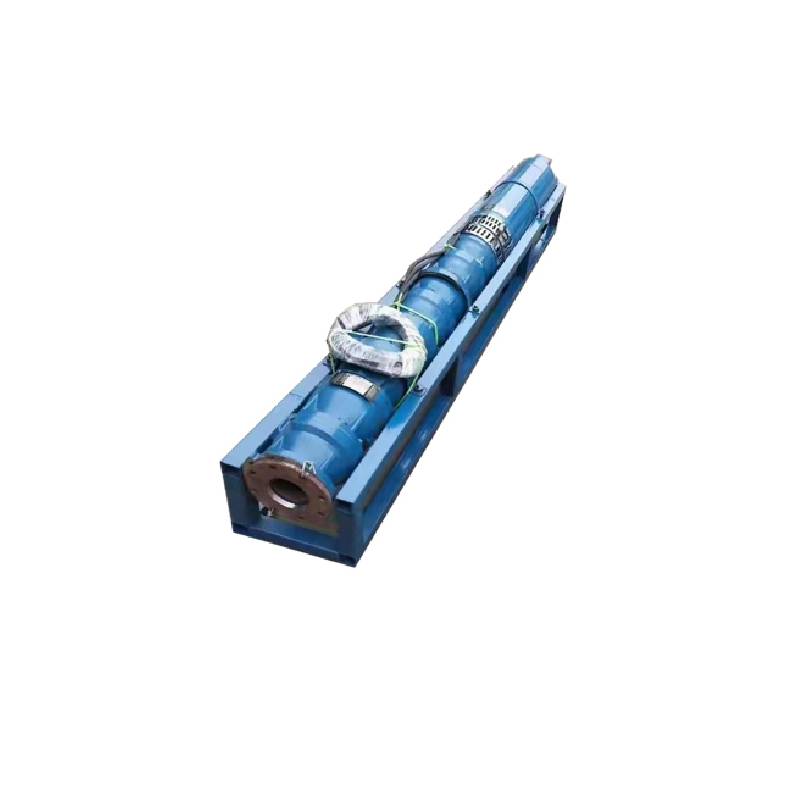Aug . 10, 2024 19:55 Back to list
Comparative Analysis of Submersible Pump Motor Prices for Different Models and Brands
The Cost of a Submersible Pump Motor An Overview
Submersible pumps are integral devices in various industries, including agriculture, construction, and mining. They are designed to operate underwater, efficiently pumping out water or other fluids. One of the critical components of these pumps is the motor. Understanding the price of a submersible pump motor is essential for anyone looking to purchase or replace one.
The cost of a submersible pump motor can vary significantly based on several factors. Generally, prices can range from a few hundred to several thousand dollars. The primary elements influencing the price include the motor's power, efficiency, brand, and the specific application it is intended for.
1. Motor Power and Efficiency
The horsepower (HP) rating of a submersible pump motor is a major determinant of its price. Motors with higher horsepower can handle larger volumes of water or thicker fluids and are usually more expensive. For example, a small, low-power motor appropriate for household use may cost around $200-$500, while a heavy-duty motor designed for industrial applications could range from $1,500 to over $5,000.
Efficiency is also a significant factor. Motors rated with higher efficiency generally carry a higher upfront cost but can lead to lower operational costs over time due to reduced energy consumption. Investing in an energy-efficient motor not only helps in minimizing energy bills but also extends the lifespan of the pump.
2. Brand and Quality
1 submersible pump motor price

Brand reputation plays a crucial role in the pricing of submersible pump motors. Well-known manufacturers often charge a premium because of their reliability, warranty, and customer service. When purchasing a pump motor, it is advisable to consider the manufacturer's track record and product reviews. Spending more on a reputable brand can offer peace of mind that you are investing in quality equipment that will perform optimally and last longer.
3. Application Specific Requirements
Different applications may require specialized motors designed for specific conditions. For instance, motors used in corrosive environments must be made from materials resistant to rust and degradation, which can elevate costs. Similarly, submersible motors designed for deep well applications may have specific characteristics that increase their price. Therefore, understanding the intended application before making a purchase is essential for getting the right motor at an appropriate price.
4. Additional Costs
Aside from the base price of the motor itself, potential buyers should also consider installation costs, maintenance expenses, and any additional equipment required for operation. For instance, a motor may require various accessories, such as a control panel, float switches, or a suitable starter, which can add to the overall investment. Additionally, professional installation may be necessary, especially for larger systems, increasing the initial cost further.
Conclusion
In summary, the price of a submersible pump motor is influenced by multiple factors, including its power rating, efficiency, brand reputation, and specific application needs. Although prices can vary widely, understanding what you need and making informed choices can lead to a worthwhile investment. When purchasing a submersible pump motor, it is crucial to balance initial costs with long-term performance and efficiency to ensure that the right unit is chosen for your specific needs. With proper selection and maintenance, a submersible pump motor can provide reliable service for many years, making it an essential component of fluid management systems across various sectors.
-
Submersible Water Pump: The Efficient 'Power Pioneer' of the Underwater World
NewsJul.01,2025
-
Submersible Pond Pump: The Hidden Guardian of Water Landscape Ecology
NewsJul.01,2025
-
Stainless Well Pump: A Reliable and Durable Pumping Main Force
NewsJul.01,2025
-
Stainless Steel Submersible Pump: An Efficient and Versatile Tool for Underwater Operations
NewsJul.01,2025
-
Deep Well Submersible Pump: An Efficient 'Sucker' of Groundwater Sources
NewsJul.01,2025
-
Deep Water Well Pump: An Efficient 'Sucker' of Groundwater Sources
NewsJul.01,2025
-
 Submersible Water Pump: The Efficient 'Power Pioneer' of the Underwater WorldIn the field of hydraulic equipment, the Submersible Water Pump has become the core equipment for underwater operations and water resource transportation due to its unique design and excellent performance.Detail
Submersible Water Pump: The Efficient 'Power Pioneer' of the Underwater WorldIn the field of hydraulic equipment, the Submersible Water Pump has become the core equipment for underwater operations and water resource transportation due to its unique design and excellent performance.Detail -
 Submersible Pond Pump: The Hidden Guardian of Water Landscape EcologyIn courtyard landscapes, ecological ponds, and even small-scale water conservancy projects, there is a silent yet indispensable equipment - the Submersible Pond Pump.Detail
Submersible Pond Pump: The Hidden Guardian of Water Landscape EcologyIn courtyard landscapes, ecological ponds, and even small-scale water conservancy projects, there is a silent yet indispensable equipment - the Submersible Pond Pump.Detail -
 Stainless Well Pump: A Reliable and Durable Pumping Main ForceIn the field of water resource transportation, Stainless Well Pump has become the core equipment for various pumping scenarios with its excellent performance and reliable quality.Detail
Stainless Well Pump: A Reliable and Durable Pumping Main ForceIn the field of water resource transportation, Stainless Well Pump has become the core equipment for various pumping scenarios with its excellent performance and reliable quality.Detail
